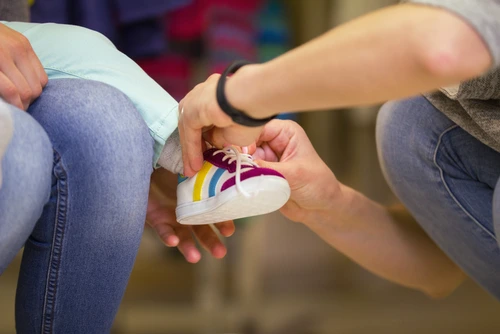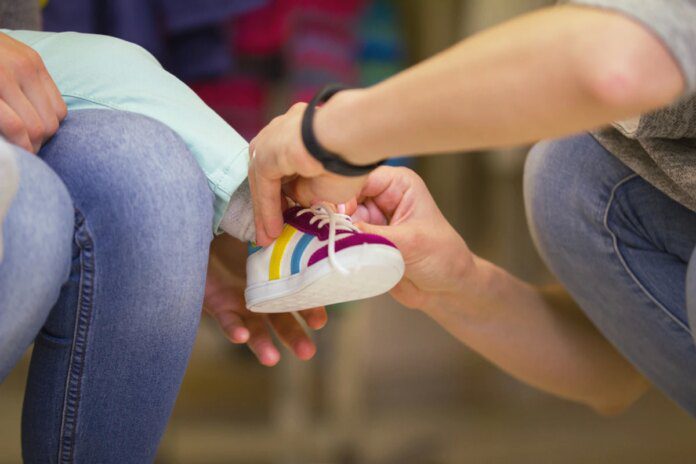
The birth of a child is a blessing for many parents. They are so excited about his arrival that some of them buy his entire wardrobe, even before the birth. They are so eager for their baby to have the first clothing accessories and they don’t think twice when they have to buy the first clothes or the first pair of shoes. Experts say that sometimes it is too early for this, and parents are in a hurry when investing money in their little one’s shoes.
The feeling of happiness when you see your little one shoed and dressed with the accessories you chose is wonderful. However, the effects that children’s shoes can have on the feet have been debated by doctors for years. Shoes for little ones are incredibly cute, but experts say it’s best to let your little one walk as long as possible in bare feet before buying their first pair of shoes.
It is important that your little one takes the first steps
Experts from the American Academy of Pediatrics advise parents not to put shoes on the feet of newborns. They believe that babies should wear shoes after they start walking. The bones in a baby’s toes are soft at birth and it is important that they grow straight. If they are cramped by shoes or tight socks, they cannot straighten and grow properly. But once your little one starts standing up, when is the right time for his first pair of shoes?
When is it recommended to buy his first shoes
Experts say that the average age when a child begins to learn to walk varies from 10 to 18 months, depending on his pace. Your child won’t need to wear a pair of shoes until they can walk without help for a few days and are ready to go outside. Even then, shoes should be kept for walking, at least at first. Once the baby has taken its first steps, it is best to make sure that the shoes are comfortable and provide some grip on slippery surfaces. The shoes must fit perfectly on the heels and allow the feet to breathe. Shoes with laces and buckles are good because they hold the heel in place and stop the foot from slipping. If possible, buy your child shoes made of genuine leather, cotton or canvas. These materials allow air circulation and minimize the risk of friction. Little feet grow quickly, so once your baby has new shoes, check the shoes every six to eight weeks to make sure they aren’t constricting your baby’s feet. Press gently on the front of the shoe and if you feel your baby’s toes at the top, it’s time for a new pair!
Photo credit: Shutterstock






































